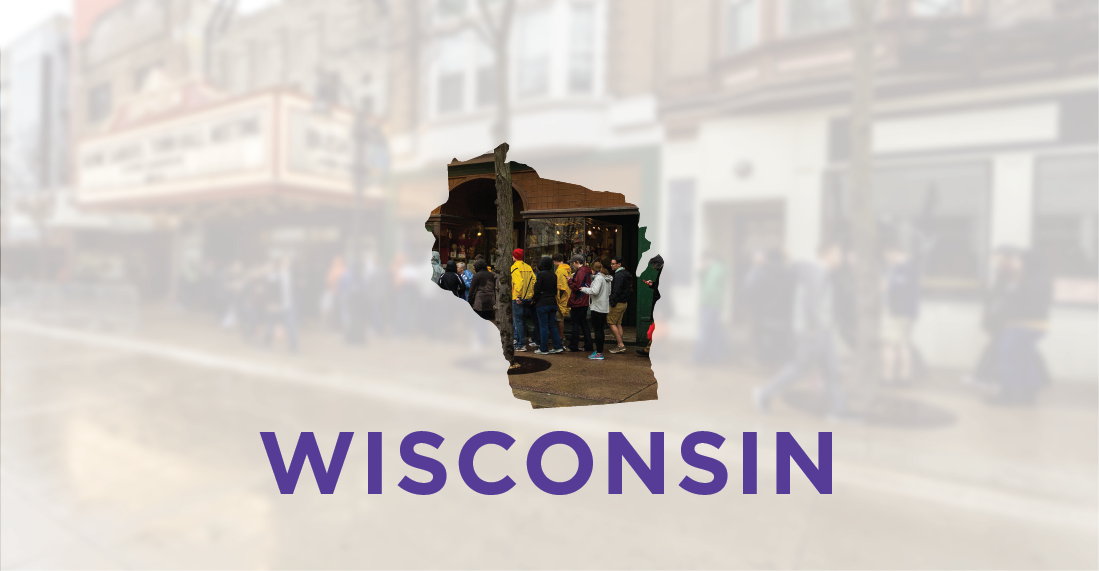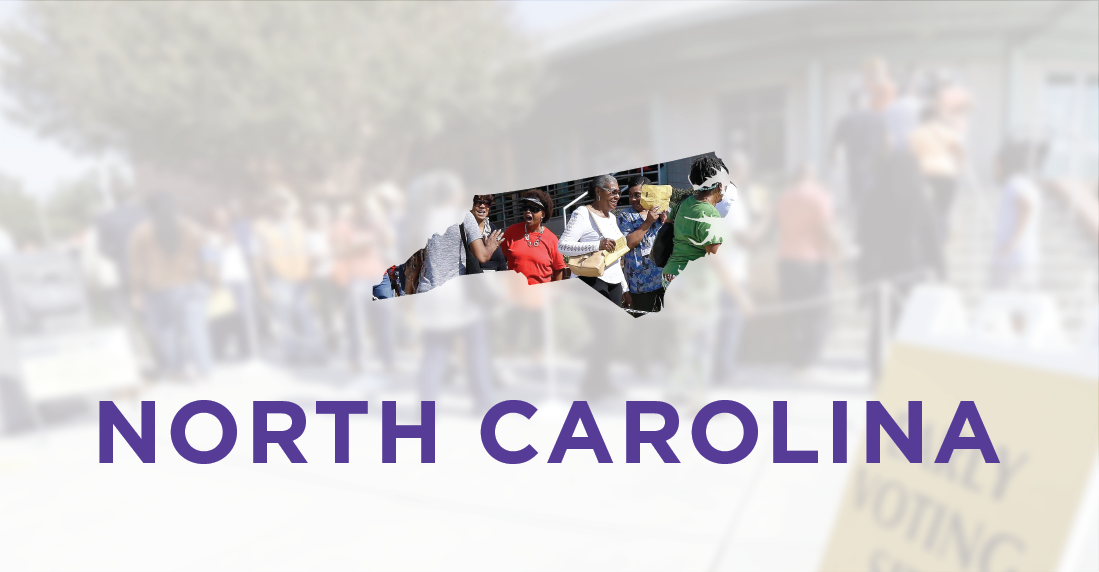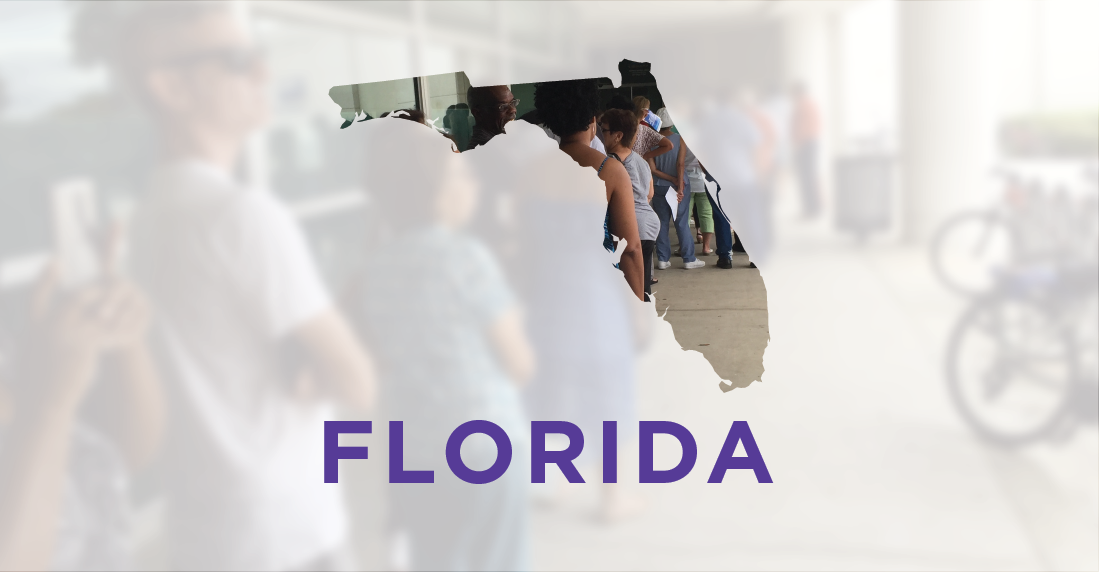Republicans Were Wildly Successful at Suppressing Voters in 2016
Last week, the first election in 50 years without the full protection of the federal Voting Rights Act propelled Donald Trump to the White House.
Trump will assume the presidency because of the Electoral College’s influence — nearly a million more people cast ballots for Hillary Clinton as of November 15. The election was also marked by low turnout, with tens of millions of eligible voters choosing not to participate at all. Yet there has been relatively little discussion about the millions of people who were eligible to vote but could not do so because they faced an array of newly-enacted barriers to the ballot box.
Their systematic disenfranchisement was intentional and politically motivated. In the years leading up to 2016, Republican governors and state legislatures implemented new laws restricting when, where, and how people could vote — laws that disproportionately harmed students, the poor, and people of color. In several instances, lawmakers pushing such policies said explicitly that their goal was suppression of voters who favor the Democratic Party.
Three such states serve as case studies for the effectiveness of these voting restrictions: Wisconsin, North Carolina, and Florida.
All three elected staunchly conservative governors during President Obama’s terms. All three implemented voting restrictions that affect millions of people. President Obama won all three states in 2008, and won all but North Carolina in 2012, while Hillary Clinton lost all three of those states this year.

Republican Gov. Scott Walker signed Wisconsin’s strict voter ID law in 2011, and it has been tied up in court battles for years. A federal court held that the law unconstitutionally burdens low-income people of color, but ultimately the Supreme Court allowed it to go into effect for the 2016 election.
In one of the many trials concerning the law, former government officials testified that behind closed doors, Republicans pushing for the voter ID were “politically frothing at the mouth” over the prospect that it would make it more difficult for people to cast ballots for Democrats.
Donald Trump won the state by fewer than 30,000 votes. According to the state’s own records, ten times that many eligible voters in the state — as many as 300,000 people — lacked the proper ID and may have been disenfranchised.
Neil Albrecht, the executive director of Milwaukee’s Election Commission, believes the policy depressed turnout in the blue counties Clinton desperately needed to carry Wisconsin. Compared to 2012, 60,000 fewer people voted in this year Milwaukee — the county that holds the vast majority of the state’s black population. Statewide, turnout was the lowest it has been for a presidential election in two decades.
Albrecht said his office received a flood of calls from voters in the city’s poorest districts who said they were unable to cast a ballot because they lacked the proper identification. According to new data released by the state, nearly 600 ballots will be thrown away because voters did not have the right ID. And Albrecht said he worries many more did not even attempt to vote because of the law.
In the final weeks leading up to the election, voting rights groups discovered that Wisconsin officials at local DMV offices were giving false information to voters attempting to get the proper ID, putting those officials in violation of a federal court order.
The University of Wisconsin launched an investigation this week into just how much the voter ID law reduced turnout in the state, and it plans to report the results later this year.

In 2013, North Carolina — led by the GOP — approved a law that eliminated same-day voter registration, cut a full week of early voting, barred voters from casting a ballot outside their home precincts, scrapped straight-ticket voting, and got rid of a program to pre-register high school students who would turn 18 by Election Day. That law also included one of the nation’s strictest voter ID requirements.
Federal courts struck down most of the law after finding that it was passed with the intention to suppress African-American voters “with almost surgical precision.” The court noted that the lawmakers first studied which racial demographics used which voting methods, and then moved to eliminate those favored by black residents. The law was a perfect example, the judge wrote, of “the inevitable tendency of elected officials to entrench themselves by targeting groups unlikely to vote for them.”
Republican-controlled county elections boards tried to find a way around the verdict. No longer able to cut a full week of early voting, the state GOP instructed the boards to make “party line changes to early voting”: cutting hours and locations.
Though some of the most extreme cuts were blocked by the state board of elections, many remained in place through the election. For example, Guilford County reduced the number of polling sites in the first week of early voting from 16 in 2012 to just 1 this year. A GOP memo issued at the end of the state’s early voting period celebrated the inevitable results of those cutbacks: African American turnout had dropped nearly nine percent.
In counties that slashed early voting hours and sites, voters also had to wait in lines several hours long to cast their ballots. A new Harvard study found that such long waits not only disenfranchise working-class voters who can’t afford to wait, but also discourages voters from participating in future elections.
Trump won the state by fewer than 200,000 votes, and the governor’s race remains too close to call.

Florida is one of just three states that permanently disenfranchise anyone with a felony conviction. The state has no automatic process for former felons to regain their voting rights. Instead, people have to travel to the state capital and proactively request that the governor grant them clemency on an individual basis.
That process has become even more difficult since Republican Gov. Rick Scott was elected in 2011. During Democratic governor Charlie Crist’s four years in office, more than 150,000 people had their rights restored. Voting advocates claimed that even that number did not go far enough, given the long backlog of applications. But when Scott took office, the clemency board changed its rules and progress slowed to a crawl. In his first term as governor, fewer than 1,600 people have had their rights restored.
Tampa resident Rodney Johnson Sr. lost his voting rights in 2002 after a drug conviction, and he has been petitioning Gov. Scott for clemency for years. He told ThinkProgress shortly before Election Day how hard it is for former felons to live in a state that doesn’t let them vote.
“We can only just watch as somebody else speaks for us and is our voice for us,” he said. “We would like to speak for ourselves. I would like our voice to be heard… But road blocks are everywhere. They make it so difficult for you to even try to have a second chance at life.”
In total, roughly 1.5 million Florida residents (almost 2.5 percent of the state’s population) are disenfranchised because of the law, which white lawmakers designed in the years after the Civil War in a deliberate attempt to dilute the voting power of freed slaves. This year, one in four of Florida’s black residents could not cast a ballot.
Clinton lost Florida by just 119,770 votes.
After last week’s election, these barriers — and others like them — will likely multiply. Missouri, for example, voted last week to enshrine a voter ID law in its state constitution. State officials estimate that 220,000 otherwise eligible voters could be disenfranchised by the policy. Republican Jay Ashcroft, the son of George W. Bush’s Attorney General John Ashcroft, will take over as Missouri’s Secretary of State, and has promised to strictly enforce the voter ID requirement.
This year, the GOP expanded its control to 32 state legislatures and 33 governorships. With all three branches of the federal government and a majority of states now under Republican control, American voters can expect to face more barriers and restrictions in the coming years.

